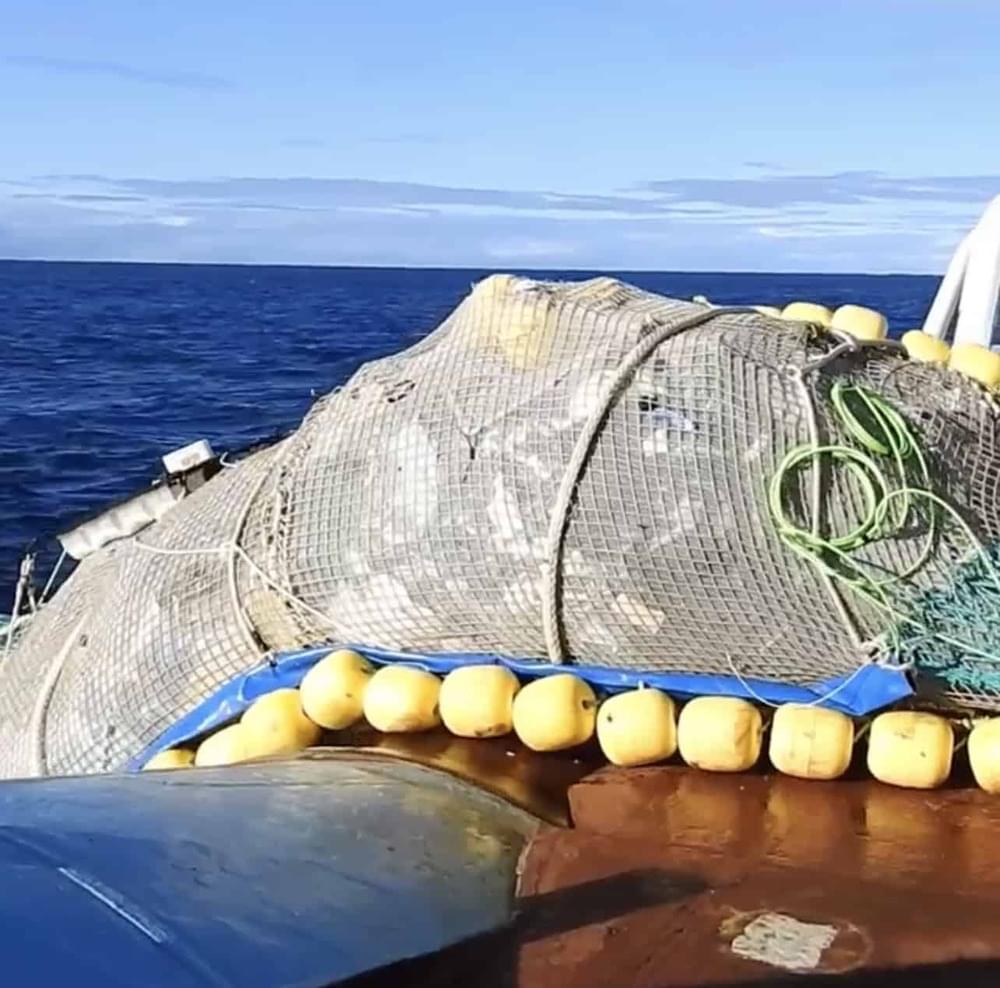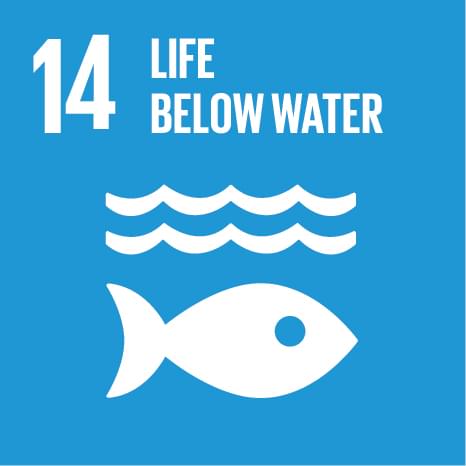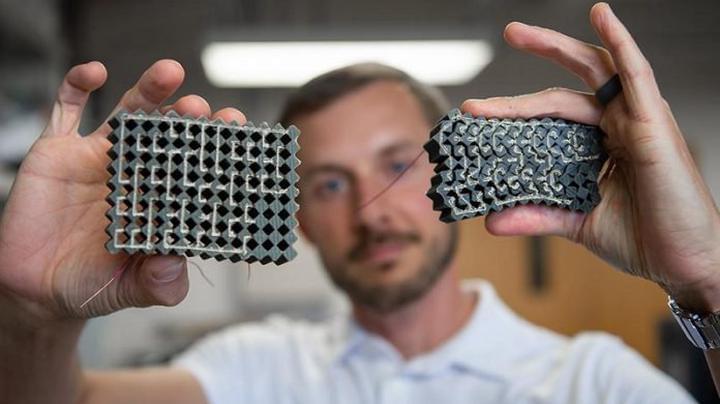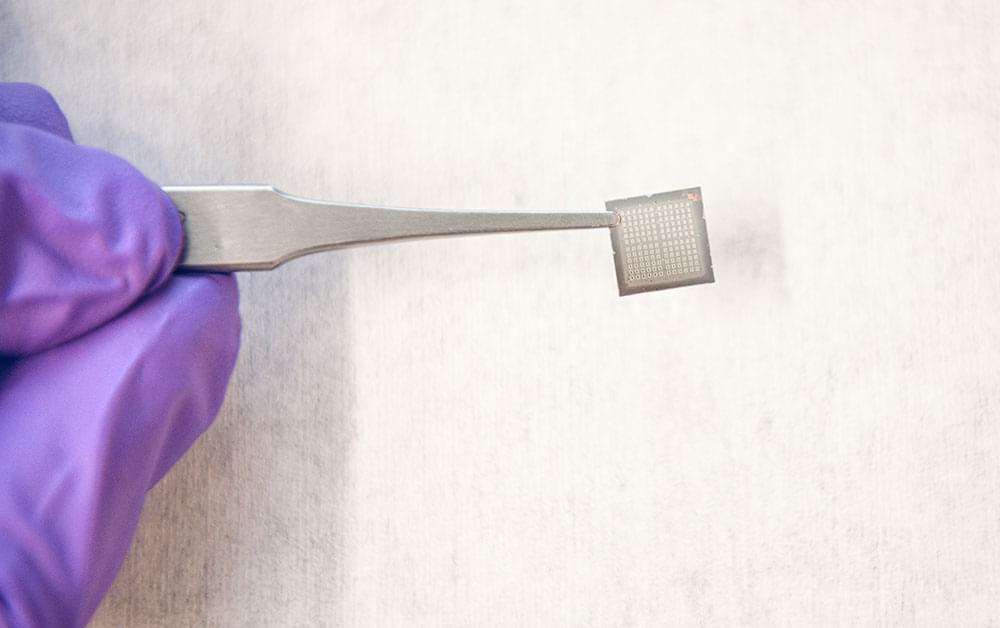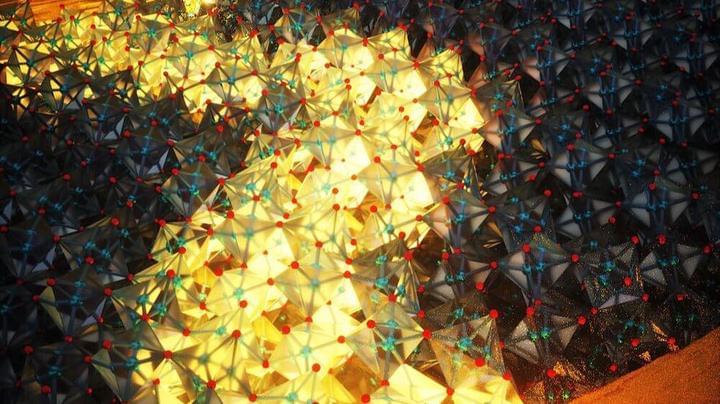Over 100,000 kilograms of plastic has been removed from the Great Pacific Garbage Patch (GPGP) in a record haul orchestrated by non-profit ‘The Ocean Cleanup’: “If we repeat this 100,000 kilogram haul 1,000 times – the Great Pacific Garbage Patch will be gone.”
Category: materials – Page 161
This holds a great opportunity for a recycling boon.
These frightening figures represent the most robust estimate of marine plastic pollution calculated to date.
Our innovative ocean cleaning system is already removing plastic from the Pacific Ocean. Combined with our Interceptor river solutions deployed around the world, we aim to reduce floating ocean plastic by 90% by 2040.
Trillions of pieces of plastic float on the surface of our oceans, damaging habitats and contaminating food chains; a problem forecast to worsen exponentially as the stream of plastic flowing into the ocean from rivers increases. We address the plastic problem with a dual strategy: removing plastic that is already polluting the oceans, while also intercepting plastic in rivers to prevent it reaching the ocean and adding to the problem.
Throughout 2021 and 2022, our ocean cleaning system has been harvesting plastic from the Great Pacific Garbage Patch (GPGP), estimated to contain around 100,000,000 kilograms of plastic. Each branch of this strategy is essential to efficiently rid the oceans of plastic.
Someone taps your shoulder. The organized touch receptors in your skin send a message to your brain, which processes the information and directs you to look left, in the direction of the tap. Now, Penn State and U.S. Air Force researchers have harnessed this processing of mechanical information and integrated it into engineered materials that ‘think.’
Using electrocorticography (ECoG), we probed the neurocognitive substrates of mentalizing at the level of neuronal populations. We found that mentalizing about the self and others recruited near-identical cortical sites (Fig. 5a, b) in a common spatiotemporal sequence (Figs. 5 c and 6). Within our ROIs, activations began in visual cortex, followed by temporoparietal DMN regions (TPJ, ATL, and PMC), and lastly in mPFC regions (amPFC, dmPFC, and vmPFC; Fig. 3e, f). Critically, regions with later activations exhibited greater functional specialization for mentalizing as measured by three metrics: functional specificity for mentalizing versus arithmetic (Figs. 3 c, d and 4b), self/other differentiation in activation timing (Fig. 5c, d), and temporal associations with behavioral responses (Fig. 4D and Table 1). Taken together, these results reveal a common neurocognitive sequence28,29,30,31 for self-and other-mentalizing, beginning in visual cortex (low specialization), ascending through temporoparietal DMN areas (intermediate specialization), then reaching its apex in mPFC regions (high specialization).
Our results are consistent with gradient-based models of brain function, which posit that concrete sensorimotor processing in unimodal regions (e.g., visual cortex) gradually yields to increasingly abstract and inferential processing in ‘high-level’ transmodal regions like mPFC41,42. We found that the strength of self/other differences in activation timing increased along a gradient from visual cortex to mPFC. Specifically, other-mentalizing evoked slower (Fig. 5c) and lengthier (Fig. 5d) activations than self-mentalizing throughout successive DMN ROIs. These self/other functional differences corresponded with self/other differences in RTBehav (Supplementary Fig. 4), although the two were often dissociable (Table 1). Thus, perhaps because we know ourselves better than others, other-mentalizing may require lengthier processing at more abstract and inferential levels of representation, ultimately resulting in slower behavioral responses.
What might our results imply about extant fMRI findings? Hundreds of fMRI studies consistently suggest that: TPJ and dmPFC are most crucial for mentalizing6,8,11,12,43,44,45,46, and dmPFC is selective for thinking about others over oneself 32,33,34,35. However, when examined with ECoG, we found that both pieces of received wisdom are not what they seem. Below, we discuss both issues before moving onto our peculiar vmPFC results, and then conclude with systems-level discussion.
WEST LAFAYETTE, Ind. — When the human brain learns something new, it adapts. But when artificial intelligence learns something new, it tends to forget information it already learned.
As companies use more and more data to improve how AI recognizes images, learns languages and carries out other complex tasks, a paper published in Science this week shows a way that computer chips could dynamically rewire themselves to take in new data like the brain does, helping AI to keep learning over time.
“The brains of living beings can continuously learn throughout their lifespan. We have now created an artificial platform for machines to learn throughout their lifespan,” said Shriram Ramanathan, a professor in Purdue University’s School of Materials Engineering who specializes in discovering how materials could mimic the brain to improve computing.
When some materials are cooled to a certain temperature, they lose electric resistance, becoming superconductors.
In this state, an electric charge can course through the material indefinitely, making superconductors a valuable resource for transmitting high volumes of electricity and other applications. Superconductors ferry electricity between Long Island and Manhattan. They’re used in medical imaging devices such as MRI machines, in particle accelerators and in magnets such as those used in maglev trains. Even unexpected materials, such as certain ceramic materials, can become superconductors when cooled sufficiently.
But scientists previously have not understood what occurs in a material to make it a superconductor. Specifically, how high-temperature superconductivity, which occurs in some copper-oxide materials, works hasn’t been previously understood. A 1966 theory examining a different type of superconductors posited that electrons which spin in opposite directions bind together to form what’s called a Cooper pair and allow electric current to pass through the material freely.
It doesn’t involve magic but mirrors and lenses.
Energy can be trapped in the form of electric charge and heat, but until now, it has been impossible to absorb it in the form of light using traditional methods. Now a team of researchers from the Hebrew University of Jerusalem and Vienna University of Technology (TU Wien) claims to have developed the perfect setup to trap light, according to a press release published by EurekAlert.
Although this isn’t the first time scientists have come up with a way to absorb light energy, it is probably the only “light trap” method using which light energy can be absorbed even by very thin and weak mediums.
Whether in photosynthesis or in a photovoltaic system: if you want to use light efficiently, you have to absorb it as completely as possible. However, this is difficult if the absorption is to take place in a thin layer of material that normally lets a large part of the light pass through.
Now, research teams from TU Wien and from The Hebrew University of Jerusalem have found a surprising trick that allows a beam of light to be completely absorbed even in the thinnest of layers: They built a “light trap” around the thin layer using mirrors and lenses, in which the light beam is steered in a circle and then superimposed on itself – exactly in such a way that the beam of light blocks itself and can no longer leave the system. Thus, the light has no choice but to be absorbed by the thin layer – there is no other way out. This absorption-amplification method, which has now been presented in the scientific journal Science, is the result of a fruitful collaboration between the two teams: the approach was suggested by Prof. Ori Katz from The Hebrew University of Jerusalem and conceptualized with Prof. Stefan Rotter from TU Wien; the experiment was carried out in by the lab team in Jerusalem and the theoretical calculations came from the team in Vienna.
Thin layers are transparent to light
Recent developments like DALLE-2 and LaMDA are impressive and seem ready for impact. Is AI ready to change the world?
Whether you love, fear, or have mixed feelings about the future of artificial intelligence, the cultural fixation on the subject over the past decade has made it feel like the technology’s meteoric impact is just around the corner. The problem is that it is always just around the corner, yet never seems to arrive. Many hype-filled years have passed us by since the releases of Ex Machina (2014) and Westworld (2016), but it feels like we are still waiting on AI’s big splash. However, a handful of recent developments—specifically, OpenAI’s unveiling of GPT-3 and DALLE-2, and Google’s LaMDA controversy—have unleashed a new wave of excitement—and terror—around the possibility that AI’s game-changing moment is finally here.
There are several reasons why it feels it has taken a long time for AI projects to bear fruit. One is that pop culture seems almost exclusively focused on the possible endgames of the technology, rather than its broader journey. This isn’t much of a surprise. When we stream the latest sci-fi movie or binge Black Mirror episodes, we want to see killer robots and computer chip brain implants. No one is buying a ticket to see a movie about the slow, incremental rollout of existing technology—not unless it mutates and starts killing within the first 30 minutes. But while AI’s more futuristic forms are naturally the most entertaining, and provide an endless source of material for screenwriters, anyone who based their expectations for AI off of Bladerunner has got to be feeling disappointed by now.
The Independent 2d.
The Independent’s journalism is supported by our readers. When you purchase through links on our site, we may earn commission. Discovery could enhance capacity, speed and ultimately lead to the miniaturisation of electronics Article bookmarked Find your bookmarks in your Independent Premium section, under my profile.
